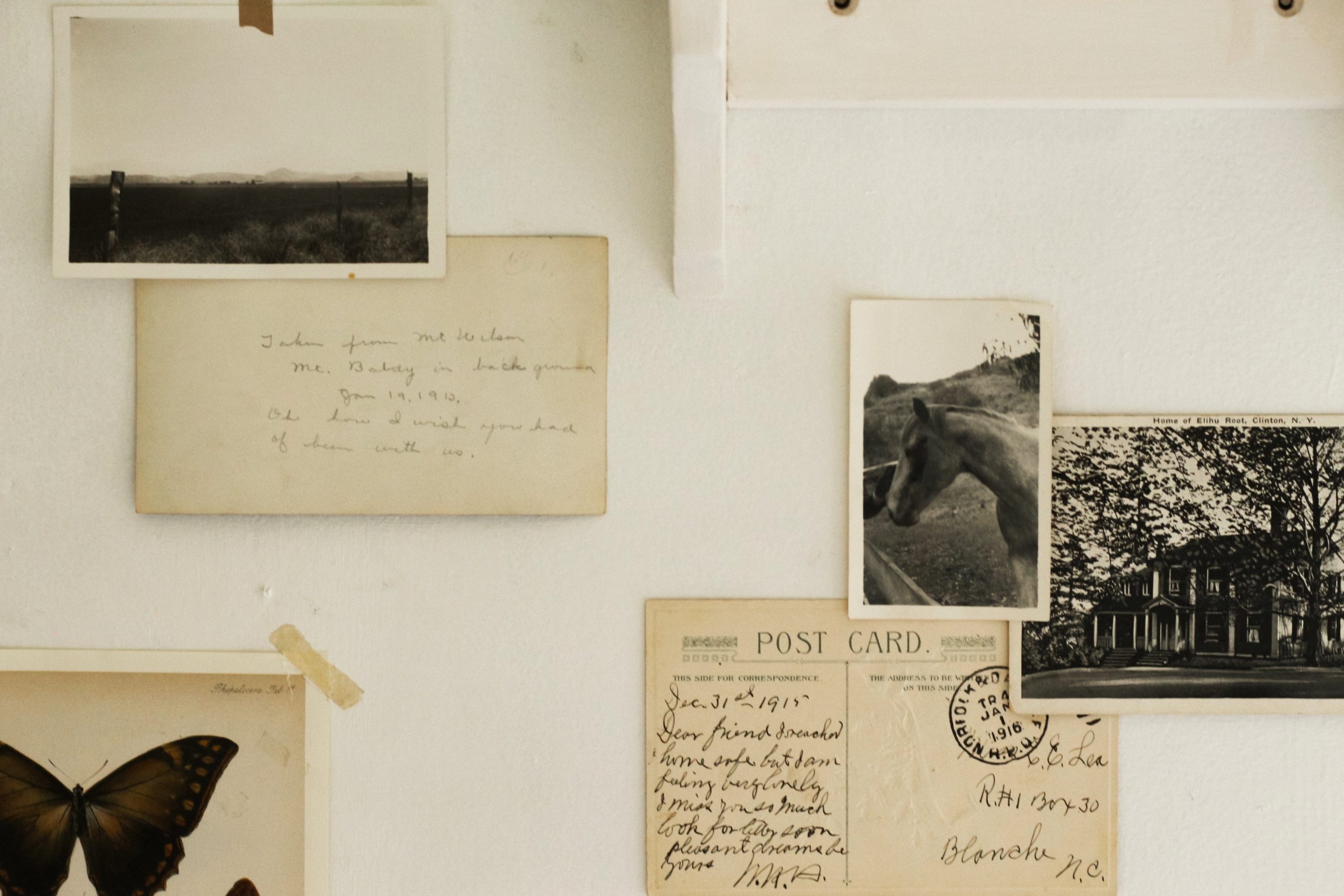Newsletter
Paper Mail Gave me Hope on Rikers Island. Don’t Take it Away from Imprisoned People.
I was lucky enough to get a lot of mail while imprisoned on Rikers Island. Paper mail is one of the few things that keeps prisoners feeling human.


Paper Mail Gave me Hope on Rikers Island. Don’t Take it Away from Imprisoned People.
by David Campbell
I was lucky enough to get a lot of mail while imprisoned on Rikers Island. There was a ton of variety: Graph paper, notebook paper, and fingerpaintings from my friends’ toddler. Tiny, delicate pages from a Muji notebook, studded with a grid of little gray dots. Sky-blue stationery trimmed with an ornate, gleaming floral motif. Cream-colored sheets, almost cardstock-thick, that felt like wicker beneath my fingers. One friend sent me near-weekly vintage Halloween postcards with exquisite holographic stamps to match. Another friend sent a campy promotional scratch-and-sniff card for the 1981 John Waters film Polyester. I once got a piece of “junk mail” from the Arbor Day Foundation; I kept it just because I found its full-color high-definition photos of trees and woodlands so beautiful. I saved every letter I received, and took them home with me in a 33-gallon trash bag upon release. Because that is how much paper mail means to a prisoner. Its value is second only to a hug on a visit.
The New York City Department of Correction is currently seeking a “variance,” or permission not to meet certain minimum standards of care, from the Board of Correction, its nominally independent oversight body, in order to eliminate nearly all paper mail for imprisoned people. Instead of distributing physical mail, nearly every card, letter, and postcard would be scanned by the for-profit corporation Securus and delivered on tablets. The tablets currently in use at Rikers were rolled out during my time there. The device, in its clear plastic shell reading “American Prison Data Systems,” had to be checked out from the guards in the morning and turned in to them at night. It is an implicit reminder of your inmate status.
Numerous studies covering everything from e-books to e-signatures have confirmed that people prefer paper texts. There is something about the physicality of paper that matters. When you’re a prisoner starved for stimuli, your senses are heightened, and these distinctions are so real they leap out of the envelope at you.
It is well known that strong ties with the outside world induce better recovery from incarceration and reduce recidivism. Paper mail, which may well be “the most common form of family contact,” is one of the most fundamental ways of keeping those ties strong. A letter’s tangibility is an essential link with the outside world, rather than a reinforcement of a person’s institutional identity.
When you are incarcerated, a physical letter is a small marvel, a message in a bottle, a reminder of who you are, where you came from, who still cares about you, and why you should stay out of trouble and come home soon.
In facilities that have implemented mail-scan policies, letters often come out blurry, poorly scanned, and barely legible. There are also serious privacy issues that mail digitization raises. And while the efficacy of paper mail bans is questionable, they indisputably leave prisoners angry, upset, and distressed. Assault rates are documented to rise when in-person visits are banned in jails and prisons, and I can confirm firsthand that when services are cut, tempers flare. If real mail is replaced with a pale copy of itself, increased violence at Rikers is all but assured.
I can also confirm firsthand that the vast majority of any prisoner’s time there is spent doing absolutely nothing, simply because there is nothing to do. The DOC could easily invest in more and better programming and health services to counter the boredom that drives many to drug-induced escapism and mental despair. There were a staggering 19 deaths in DOC custody last year, many from overdoses.
Prison systems have typically claimed they must move to digital mail in order to prevent contraband from entering facilities, but this is a red herring. While some guys I was incarcerated with did talk about receiving drugs in the mail, these small amounts paled in comparison to what was rumored to be trafficked by guards. After visits at Rikers were banned during the first wave of the pandemic, the amount of drugs found at the facility doubled. Since 2017, 25 city jail officers have been arrested in connection with smuggling contraband. DOC Commissioner Louis Molina has countered those statistics using the “few bad apples” argument—he reportedly stated last month that “twenty-five is not a majority of the people at the Department of Corrections.” To add insult to injury, Molina last year tried to rescind a rule banning jail officers from wearing cargo pants—a prohibition that had been put in place because guards had been using them to smuggle contraband.
The BOC has formed a commission to investigate the proposal before its next meeting on February 14— Valentine’s Day.
“There is a long history of DOC using variances to get around providing the bare minimum jail conditions guaranteed by the Constitution,” Jarrod Shanahan, author of Captives: How Rikers Island Took New York City Hostage, told The Appeal. One thing is certain: the BOC cannot grant this variance and continue to claim it is making NYC’s jail more humane. Paper mail is one of the few things that keeps prisoners feeling human.
In the news
“All too often, hiring more Black and brown officers just provides us with the privilege of being brutalized by people who look like us,” writes movement lawyer and commentator Olayemi Olurin. [Olayemi Olurin / Teen Vogue]
Ali Winston and Appeal writer Darwin BondGraham have published a new book on the Oakland Police Department, “The Riders Come Out at Night: Brutality, Corruption, and Cover-up in Oakland.” [Darwin BondGraham / Twitter]
Massachusetts Democratic lawmakers introduced legislation to offer prisoners time off their sentence if they donate their organs or bone marrow. [Matthew Cunningham-Cook / The Lever]
On January 18, Georgia State Patrol shot and killed a forest defender named Tortuguita—a 26-year-old whose birth name was Manuel Teran—during a raid. “No one would have been killed had Atlanta’s leadership not rammed through the unpopular project known as Cop City,” write Michah Herskind and Hannah Riley. [Michah Herskind and Hannah Riley / Teen Vogue] From The Appeal: Organizers are calling on national support for their continued efforts to halt the construction of a police militarization facility in the Atlanta forest, Aja Arnold reports.
In Albuquerque, New Mexico, a recently launched community-safety department is responding to calls for service involving nonviolent crises, primarily pertaining to mental health, homelessness, and substance use. In years past, these duties would have fallen primarily to officers with the city’s police department, which has one of the nation’s highest fatal shooting rates. [Murat Oztaskin / The New Yorker]
ICYMI — from The Appeal
After decades in prison, should adults convicted as teens get a second chance? In part two of this series, Sylvia A. Harvey covers one man’s fight for resentencing in D.C. under recently enacted youth justice legislation. Published with The Imprint.
Georgia prisons are in the midst of two Department of Justice investigations, but conditions seem to keep getting worse, report Aja Arnold and C. Dreams. Violent assaults and homicides in these facilities continued at a near-record pace in 2022, and suicides reached a new high.
That’s all for this week. As always, feel free to leave us some feedback, and if you want to invest in the future of The Appeal, donate here.
